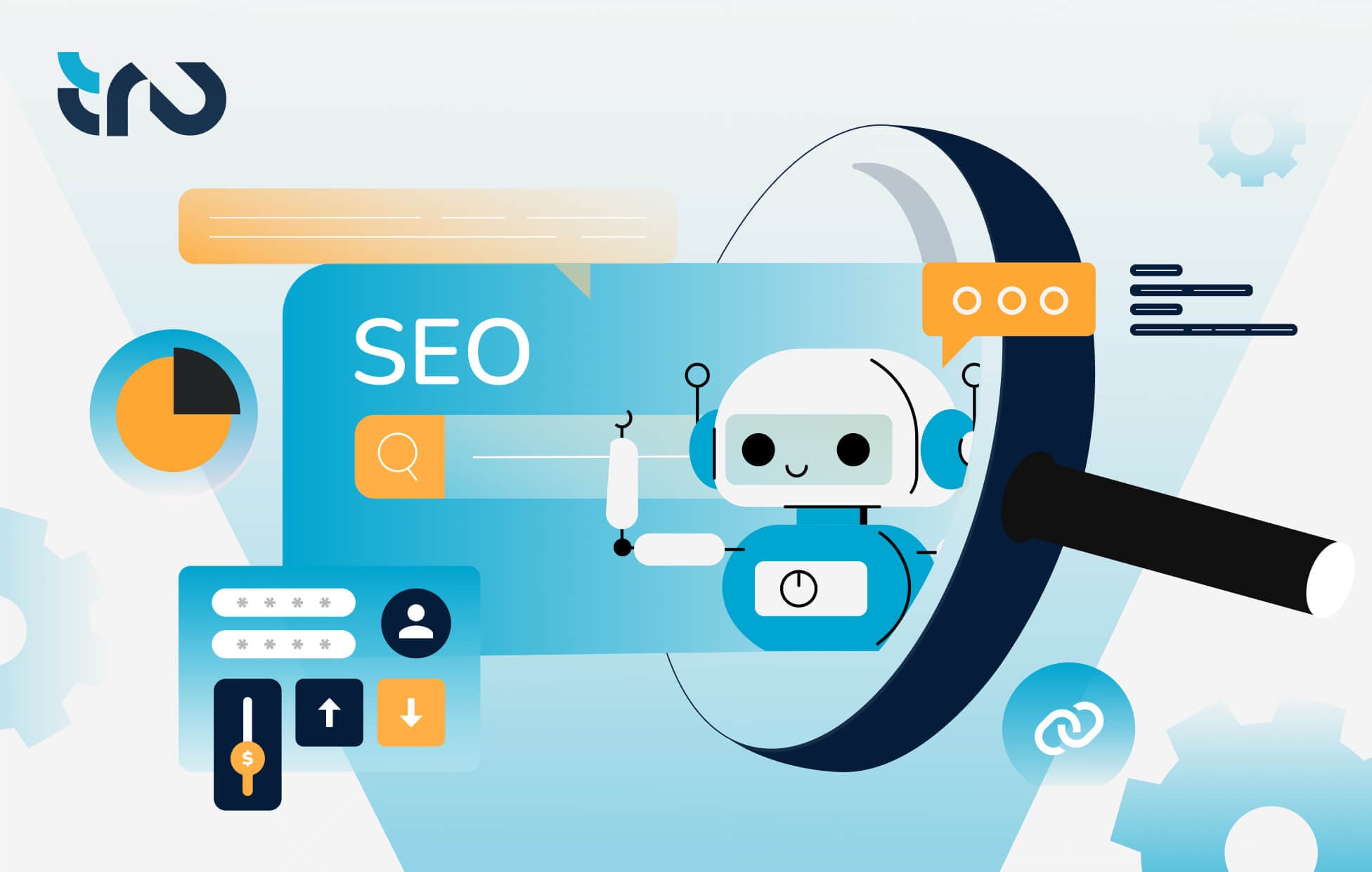Every broken link, missing meta tag, or outdated product description is like a tiny leak in a ship. The revenue sinks quietly, long before anyone notices.
When hundreds or thousands of pages update weekly, manual SEO struggles to keep up. Unchecked errors accumulate fast, hurting both search visibility and revenue.
Automation acts like a plug for SEO leaks. It handles repetitive, time-consuming SEO tasks, keeping every page fresh, optimized, and search-ready.
In 2025, search engines favor fast, consistent, and error-free sites. SEO automation keeps them performing at their best.
Five SEO workflow automations top e-commerce brands implement to speed up site performance and capture high-value opportunities include:
E-Commerce SEO Automation Workflows | Recommended Tools & Platforms | Purpose and Benefit |
|---|---|---|
Keyword Clustering and Content Mapping | SEMrush, Ahrefs, SurferSEO, MarketMuse | Organizes huge keyword sets into clusters and maps them to the right pages, making content easy to find. |
AI-Generated Product Page Content | Jasper AI, Copy.ai, Writesonic, OpenAI GPT | Creates meta titles, descriptions, schema, and product copy at scale, keeping catalogs fresh and search-ready. |
Technical Monitoring and Instant Fixes | Screaming Frog, DeepCrawl, Sitebulb, Ryte | Detects broken links, redirects, slow pages, and duplicates in real time, fixing issues fast to protect traffic. |
Smart Internal Linking | Link Whisper, Internal Link Juicer, SEO PowerSuite | Automatically links related pages and products, boosting visibility and guiding shoppers to high-value items. |
Reporting and Forecasting | Google Data Studio, Tableau, Looker, Power BI | Combines SEO, analytics, and e-commerce data into dashboards that translate numbers into actionable insights. |
1. Keyword Clustering and Content Mapping
Automation sifts through oceans of keywords, clustering them logically. Each keyword is then mapped to the right page, from product details to category hubs.
Benefits in Action
Turns weeks of keyword chaos into hours of clarity
Aligns every piece of content with search intent
Keeps brand language and topical focus consistent across vast catalogs
Example: A national apparel retailer runs 250,000 search queries through an AI tool. Keywords like “men’s summer suits,” “linen blazers,” and “beach wedding jackets” fall neatly into one category strategy. Related terms flow to blogs and product pages.
Takeaway: Keyword clustering is like sorting laundry with a machine that already knows every fabric, fast, precise, and impossible to do wrong.
Related insight > Enterprise SEO: Strategies & Tips for Large-Scale Businesses
2. AI-Generated Product Page Content
AI now generates meta titles, descriptions, structured data, and on-brand product copy. It follows the exact tone and SEO playbook your team sets.
Benefits in Action
Keeps up with nonstop SKU launches
Ensures every new page is visible and structured for search
Saves writers from copy-paste purgatory
Example: A home goods retailer drops 10,000 new SKUs for the holidays. Overnight, AI fills in metadata and schema for every page, while the team fine-tunes only the top 100 high-margin items.
Takeaway: AI is a tireless content assistant who never sleeps, never complains, and always remembers your brand guidelines.
3. Technical Monitoring and Immediate Remediation
Automated crawlers patrol your site nonstop, catching broken links, redirect chains, slow pages, or duplicate content before they start costing traffic or trust.
Benefits in Action
Protects revenue from disappearing due to silent technical issues
Spots and resolves problems faster than any monthly audit ever could
Keeps large, fast-changing sites healthy without manual intervention
Example: During a seasonal refresh, a grocery chain suddenly spawns 1,200 broken URLs. The system spots them in real time, applies temporary redirects, and pings IT for permanent fixes.
Takeaway: Think of automated monitoring as a 24/7 SEO bodyguard who is quick to detect trouble and faster to clean it up.
Connect, engage, & grow with Tru’s full suite of Digital Marketing Services.
4. Strategic Internal Linking
Automation weaves smart internal links across your site. It connects related products, strengthens page authority, and guides both shoppers and crawlers toward the good stuff.
Benefits in Action
Builds stronger crawl paths and topic relevance
Gently nudges shoppers toward higher-value add-ons
Saves hours of manual linking
Example: On a “yoga mat” page, the system automatically adds links to “foam rollers” and “yoga blocks” using relevance and purchase data. Clickthrough improves, and Google recognizes tighter topic clusters.
Takeaway: Internal linking automation works like an invisible salesperson who always knows what to suggest next and never misses a product.
5. Performance Reporting and Forecasting
Automation merges Search Console, analytics, and e-commerce data into one dashboard that actually speaks business. It highlights trends, forecasts outcomes, and shows how SEO adds to the bottom line.
Benefits in Action
Shows which SEO efforts directly grow revenue
Gives executives data they can act on, not just admire
Translates SEO metrics into business language
Example: A beauty brand learns that jumping from rank seven to rank three for “vegan lipstick” could add $2.4M in annual revenue. This insight directly drives the strategic budget for the next campaign.
Takeaway: SEO reports are the actionable financial dashboards every CMO wants to act on.
Related Insight > 5 Key Emerging Trends In Answer Engine Optimization 2025
Top Case Studies: Big Brands, Bigger SEO Wins With AI-Powered SEO
Real results don’t happen by chance. See how top e-commerce brands utilize SEO automation for better site performance:
Walmart: Real-Time SEO Defence With AI Monitoring
Walmart’s marketplace runs on AI-driven, real-time listing audits, instantly flagging and fixing compliance or data issues. This automation keeps pages clean, trustworthy, and search-friendly, safeguarding both customer trust and SEO performance site-wide. (Source: Corporate Walmart News)
eBay: Automating Product Content That Sells Itself
eBay’s generative AI tools automatically craft product titles, descriptions, and keywords from images and seller data. The result is thousands of SEO-optimized listings published in seconds, boosting visibility, accuracy, and buyer engagement globally. (Source: Retail Dive)
Amazon: Turning Search Data Into Smart SEO Decisions
Amazon’s AI-powered Opportunity Explorer analyzes billions of shopper interactions to reveal high-demand keywords and unmet product needs. Automated insights accelerate content creation and forecasting while enabling smarter, data-backed product launches. (Source: Amazon News)
Stop Losing Visitors! Maximize traffic growth with Tru’s proven SEO and Organic Marketing Services.
Make Every Page Perform with TRU Smart Automation.
Contact UsAction Plan: Getting the Most Out of Automated SEO Processes
Automation works best when planned, measured, and fine-tuned. Apply these steps and maximize every workflow.
Start focused: Pilot one workflow in a single product category to test results.
Measure what matters: Focus on revenue and conversions, not vanity rankings.
Set guardrails: Keep automation aligned with brand accuracy and tone.
Offload the repetitive: Let AI handle routine tasks while your team drives strategy.
Refine continuously: Review outcomes, learn fast, and keep improving.
SEO automation makes every page work smarter, not harder. Tru equips brands to harness it for exceptional performance and market dominance.
Frequently Asked Questions about SEO Automation Workflows
An SEO automation workflow is a system that automatically handles repetitive SEO tasks, such as keyword clustering, meta tag updates, and internal linking. It keeps pages search-friendly, reduces errors, and frees the team to focus on strategy. Implementing these workflows improves site visibility, ranking consistency, and overall performance.
Commonly automated tasks for e-commerce sites include meta title and description creation, structured data generation, keyword grouping, technical monitoring for broken links or redirects, and smart internal linking. Automation ensures updates happen consistently across thousands of product and category pages, keeping your website optimized without constant manual effort.
Success is measured through tangible business metrics like organic traffic growth, conversion rates, and revenue contribution. Dashboards can consolidate data from analytics, Search Console, and e-commerce platforms to provide clear insights on which automated tasks are delivering results.
Absolutely. Even smaller catalogs gain efficiency by automating routine SEO tasks, allowing teams to focus on high-value content and campaigns. Applied correctly, automation helps SMBs compete with larger brands, maintain consistent SEO practices, and reduce human errors that impact rankings.
Tools depend on the workflow. For keyword clustering, SEMrush or MarketMuse works well. For AI-generated product content, Jasper AI or Writesonic is ideal. Technical monitoring can be handled by Screaming Frog or Sitebulb. Internal linking benefits from Link Whisper or SEO PowerSuite. Reporting can be consolidated in Tableau, Looker, or Google Data Studio.



